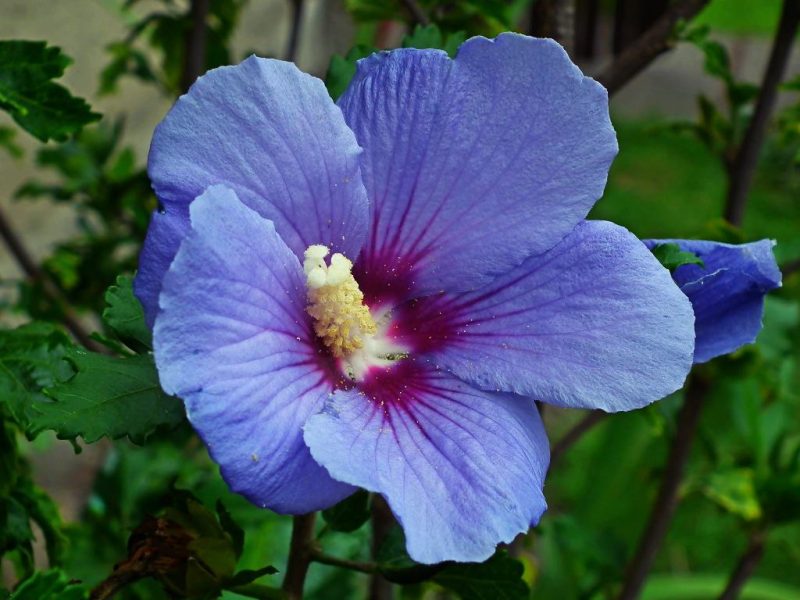Have you ever wondered how to cultivate bare root hibiscus? These beautiful flowers come in different colors: white, pink, peach, orange, yellow, red, or purple. Bare root hibiscus offers several benefits, but many gardeners are unfamiliar with this starting medium.

What You Need to Know About Cultivating Bare Root Hibiscus
Gardeners are used to planting small liners, but bare root hibiscus is grown in the field and offers a larger yield. This means you’ll enjoy faster turnaround times and more high-quality flowers per container.
If you’re interested in how to cultivate bare root hibiscus, here are seven things you need to know:
Tip #1: Potting and Time of Planting
You must place the bare root hibiscus in the pot as soon as you get it. Plant one bare root plant in every three-gallon container in peat moss or bark planting medium with an ideal pH level of 6 to 6.5. Place them outside once the last frost date has passed and made sure to install drip irrigation. Make sure that you avoid placing the pots too close to one another.
Tip #2: Fertilizer
If you want your hibiscus plants to grow fast, you’ll need to apply fertilizer. Feed the plants with liquid fertilizer of 150 to 200ppm nitrogen during every irrigation or you can add control release fertilizer when you pot it. Make sure not to add too much fertilizer because too much phosphorous can kill your plants.
Tip #3: Watering
Your hibiscus plants thrive best in a moist potting medium. If it’s too dry, the leaves will fall, and your cuttings will look like sticks. When this happens, don’t throw your cuttings away. It will re-bud, but make sure that you don’t overwater or underwater your plants. Don’t let water sit in the container; otherwise, it will lead to root rot. Make sure to use a pot that has proper drainage.
Tip #4: Temperature
Hibiscus plants grow best in warmer climates, with a temperature of 65 to 67 degrees F or higher. If you live in colder areas, you can expect a drawn-out growing season and chlorotic leaves. It’s better to place your plants outdoors during the summer but make sure they’re getting enough water.
Tip #5: Diseases and Pests
Japanese beetles, spider mites, whiteflies, and sawflies are some of the pests that attack your hibiscus plants. Make sure to check your plants regularly for these harmful insects and apply appropriate measures if you spot one. As for diseases, thankfully, blight is not common on hibiscus plants.
Tip #6: Lighting
For your hibiscus plants to produce flowers and leaves, you’ll need to expose them to high light. For example, some hibiscus variants will grow greener if you grow them in a greenhouse. It’s best to grow them in full sun or outdoors or if you grow them in a greenhouse, make sure you have high light intensities. Hibiscus flowers need long days for flowers to bloom.
Tip #7: No Forcing
Many gardeners want to force hibiscus, but this isn’t recommended. Aside from the fact that forcing them to bloom is expensive, these flowers need long days in order to bloom. Experts recommend to naturally grow bare root hibiscus.
Why Plant Your Hibiscus Flowers in a Semi Pro Greenhouse?
As mentioned, hibiscus plants need to grow in warmer climates and they also need longer days to bloom. If you live in colder regions, it’s better to cultivate your plants in a greenhouse. Here are some of the reasons why:
Protect your plants from harmful insects
Hibiscus plants are susceptible to insect attacks from whiteflies, sawflies, and more. Keeping them inside. An enclosed space reduces the chances of attracting these pesky insects.
Greenhouses come in different sizes
When people think of greenhouses, they instantly think of large, glass wall enclosures. However, not a lot of people know that greenhouses come in different shapes and sizes. You don’t always need a gigantic greenhouse unless you’re running a commercial business. If you want to grow seasonal fruits, vegetables, flowers, etc., you can still benefit from semi pro or mini greenhouses for a fraction of a cost.
Semi Pro Greenhouse is a great option for those with limited spaces
If you’ve been wanting to grow your own produce but you don’t have enough space, a semi-pro greenhouse is the one for you. Its compact size can be placed on balconies, patios, decks, and more. Even though they’re smaller, semi pro greenhouses provide the same benefits as regular-sized greenhouses.
Keep your plants safe from harmful weather
Snow, frost, ice, heavy winds, and rains can easily wipe out your flowers and crops. Protect your plants from bad weather conditions by placing them inside a greenhouse. Once the weather warms, you can transplant them outside if you want to, but you can keep them there until spring season begins.
Grow crops and plants any time
With a greenhouse, you don’t have to wait before planting your crops. You’ll be able to grow them before the cold season begins in your area. You can keep them inside the greenhouse until the weather becomes more manageable and you can place them outside.
Final Thoughts on How to Cultivate Bare Root Hibiscus
After learning how to cultivate bare root hibiscus, the next step is to start planting. Be sure to keep these tips in mind and you’ll be able to enjoy healthy and colorful blooms.
